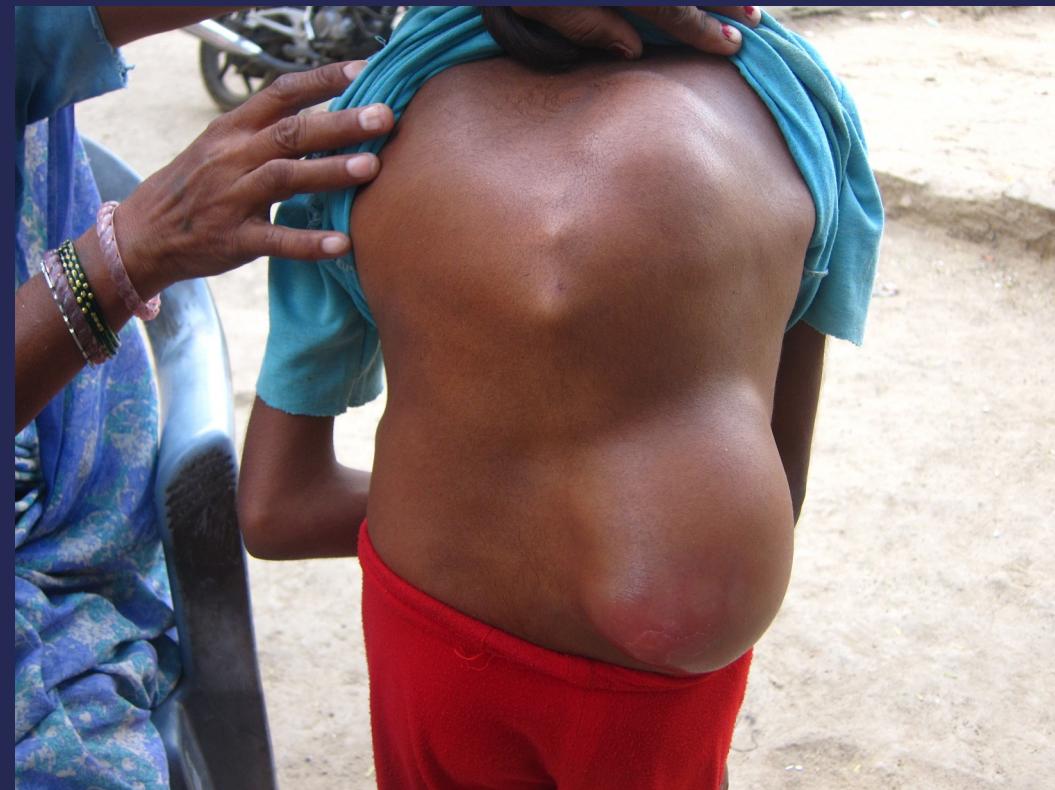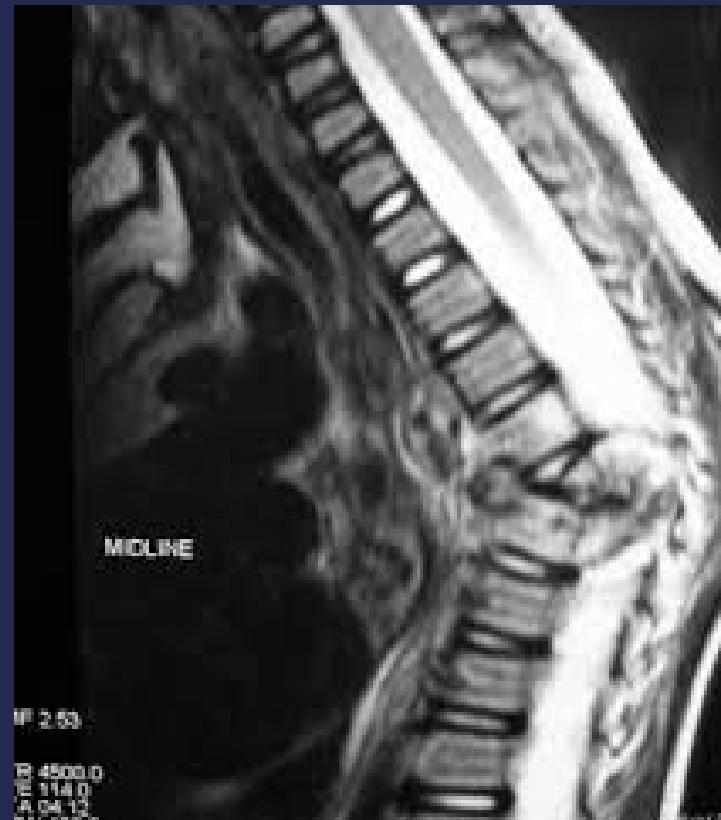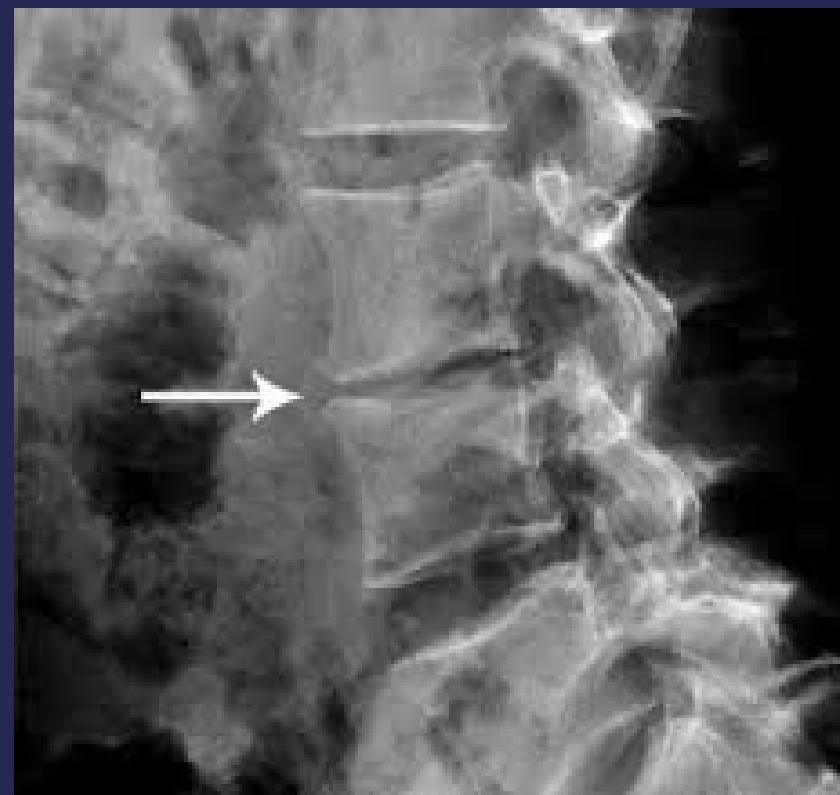Spinal Infections
Tuberculosis (Pott’s Disease)
Pathology
- Most common skeletal TB manifestation
- Blood-borne infection
- Process: Starts in bone adjacent to disc → caseation and destruction → spreads to adjacent disc and vertebra → collapse and angular deformity
- Cold abscess formation from caseous material
- Paraplegia potential complication
Causes of Paraplegia
- Spinal cord compression
- Chronic irritation
- Spinal artery thrombosis
Clinical Features
- TB toxemia
- Severe back pain
- Fixed angular kyphosis
- Cold abscess: paravertebral, ilio-psoas, gluteal
- Movement limitation of spine
- Paraparesis/paraplegia

Investigations
- High ESR
- CBC: leucopenia, lymphocytosis
- Mantoux test: Good negative test
- Imaging: Narrow disc space, soft tissue abscess, angular kyphosis, destruction of 2 adjacent vertebrae with disc space involvement
- MRI: Useful for assessing spinal cord condition

Treatment
- Early cases (no destruction, no abscess): Anti-TB chemotherapy
- Surgical indications:
- Abscess formation
- Progressive deformity
- Neurological deterioration
Pyogenic Infection
Overview
- Less common than TB
- May start in bone (spondylitis) or disc (pyogenic discitis)
Clinical Features
- Pain
- Tenderness
- Marked limitation of movement
Investigations
- High ESR, High CRP
- CBC: leukocytosis
- Blood culture
- Agglutination tests for salmonella and brucella
- X-ray findings

Treatment
- Bed rest
- Antibiotics for 6 weeks
- Brace immobilization




